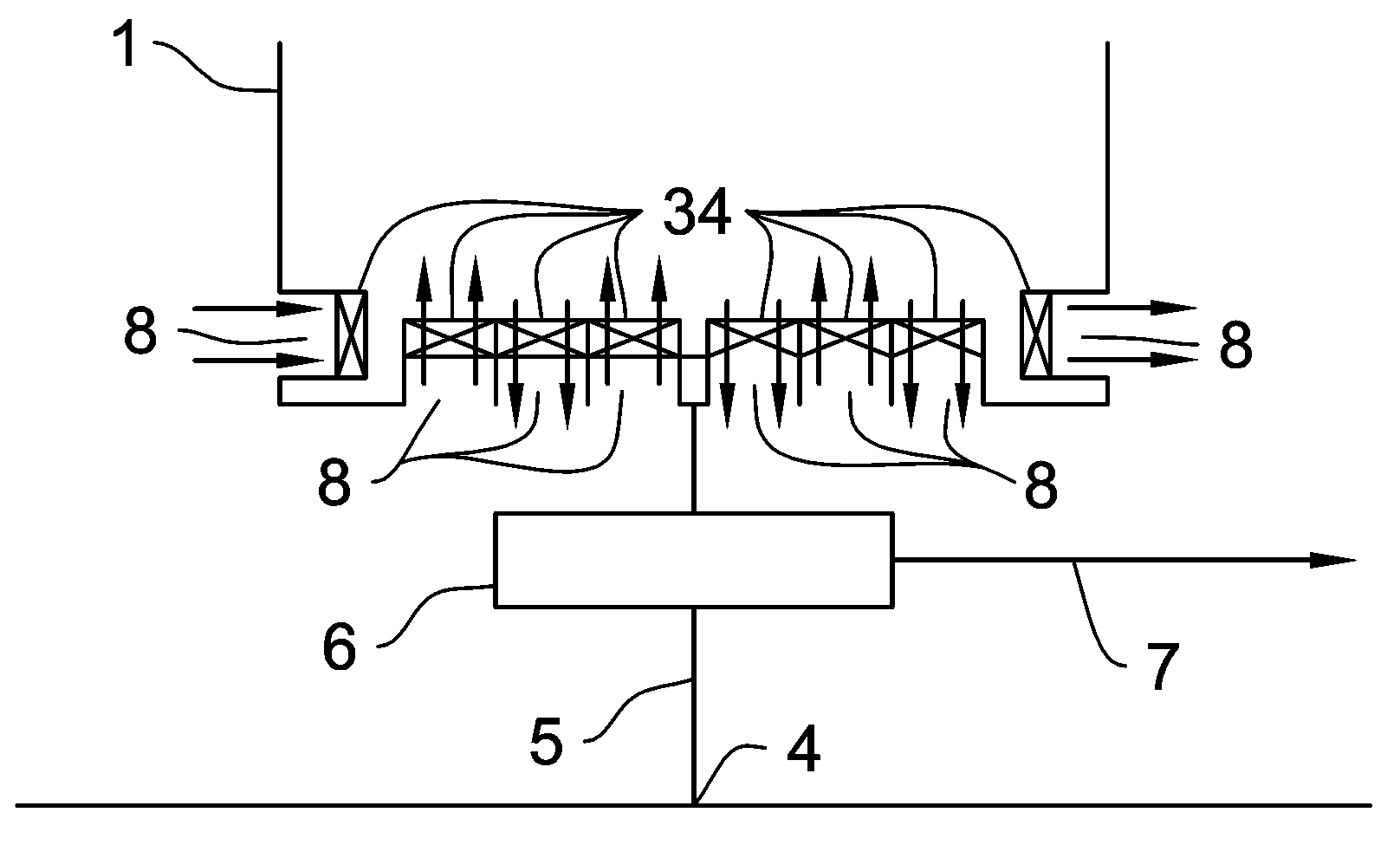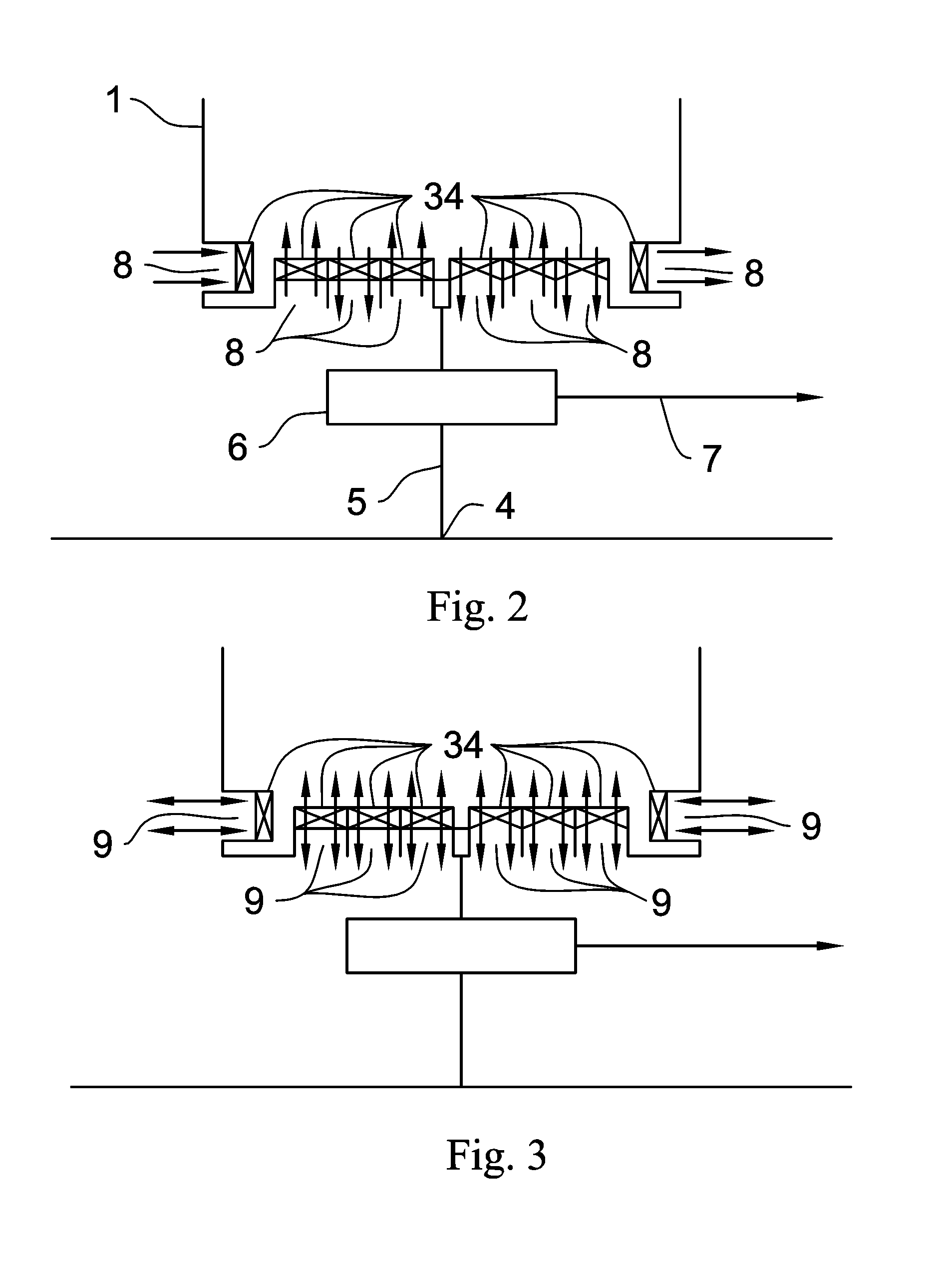Ocean wave energy converter (OWEC)
- Summary
- Abstract
- Description
- Claims
- Application Information
AI Technical Summary
Benefits of technology
Problems solved by technology
Method used
Image
Examples
Embodiment Construction
[0023]The OWEC (FIG. 1) essentially consists of a container (1) which in operation is partially submersed to a specific height from the seabed (2) such that the waterline (3) varies in height with the passing of waves. The device is connected to the seabed (4) using cables or supports (5). The device may be erected on a platform supported on the seabed or buoy (6). In FIGS. 2 and 3, the container is fitted with one or a number of pipes (8 or 9) that facilitate the inflow and outflow of seawater between the container's interior and the sea. As waves pass the container it is filled and emptied through these pipes. This is due to a differential created between the water on the inside of the device and the water on the outside of the device due to the device's buoyancy, that it is connected by cables to the seabed or that it is erected on a platform. Different pipes (8) could be used for the inflow and outflow (FIG. 2) or the same pipe (9) could facilitate both the inflow and outflow (F...
PUM
 Login to View More
Login to View More Abstract
Description
Claims
Application Information
 Login to View More
Login to View More - Generate Ideas
- Intellectual Property
- Life Sciences
- Materials
- Tech Scout
- Unparalleled Data Quality
- Higher Quality Content
- 60% Fewer Hallucinations
Browse by: Latest US Patents, China's latest patents, Technical Efficacy Thesaurus, Application Domain, Technology Topic, Popular Technical Reports.
© 2025 PatSnap. All rights reserved.Legal|Privacy policy|Modern Slavery Act Transparency Statement|Sitemap|About US| Contact US: help@patsnap.com



